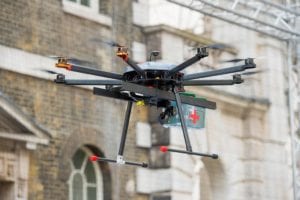In this blog, Madhur Arora will discuss the implications of 5G in the healthcare domain. Madhur is a technical evangelist and a polyglot programmer. He is currently working as a 5G technology specialist within Innovations Lab in the United Kingdom. He has a proven track record of considerable technical expertise to deliver innovation around customer experience and provide quantifiable business benefits. He has helped several communications service providers, large scale product-based organizations, medium-sized enterprises, and startups in the last decade that significantly impacted the digital sector. He firmly believes that the IEEE ComSoc YP group has modeled a strong foundation for talented young professionals. They deliver world-class digital infrastructure and healthcare technology solutions to the humanitarian society.
Now, let’s hear from Madhur!

The telecommunications industry has believed for a long time that it has a vital role to play in the expansion of digital ecosystems for the $9.1 trillion worth of healthcare market. However, both communications service providers and their technology associates have struggled to gain momentum to create related services and solutions.
Healthcare was very fragmented and had not been ready for new digital opportunities. The connectivity industries were also not offering the right solutions to fit the needs of the healthcare sector. However, digital technologies for healthcare are crucial, as the global pandemic has accelerated the need for this.
Testbeds are being set up by the operators worldwide to develop such prototypes of innovative products and services. 5G can translate use cases into innovative technology solutions for healthcare benefits, and these benefits are bringing down barriers to broader scale and growth of things in the market today.

Let’s briefly discuss some of the use cases of 5G in healthcare.
- 5G can support remote surgery due to its ultra-reliable low latency communication. It can provide a latency of fewer than four milliseconds and fast connectivity to facilitate doctors’ team to perform remote surgeries.
- 5G is now supporting the continuous monitoring and processing of sensory devices to facilitate continuous monitoring of patients in real-time

- 5G also underpins real-time control of UAVs in emergencies such as disaster relief, to facilitate the quick and affordable transport of medicines, blood, and other medicinal supplies.
5G’s ‘technology readiness’ is not enough to revolutionize the healthcare industry, but ‘adoption readiness’ is vital. This situation demands a pragmatic approach to deploy testbeds, develop and implement real services, and introduce innovative digital healthcare products.

Some of the suppressing challenges that hinder the adoption of 5G in the healthcare industry are:
- A significant point of conflict is the disparity of 5G access to one and all, i.e., for rural and urban patients. Thus, it requires the enablement of multi-access infrastructures and open collaboration among the operators to extend and support inter 5G services for humanitarian societies.
- People believed to have threats towards sensitive information with the application of 5G. Medical identity theft, data mismanagement, and health privacy concerns are a risk for every patient.
- Content service providers (CSPs) are taking strict measures to segment their networks. They are implementing deep packet inspection mechanisms to harden devices’ security, core network encryptions, and identifying network abnormalities.
However, people are rationally acknowledging new risks at the outset, addressing, and radically reducing them.
In conclusion, it is not surprising, the applications of 5G in the healthcare sector are many. And the time has come to realize its use cases and bring research work into life, to change the relationship between the patient and a doctor. 5G unlocks new healthcare transformation opportunities and has started putting us all underneath a virtual knife with its high-end capabilities. From 2G to 5G, it has been a steep learning curve that encompasses theories and research to become a reality among users for society’s greater good.
**Statements and opinions given in this blog are the expressions of the contributor(s). Responsibility for the content of published articles rests upon the contributor(s), not on the IEEE Communication Society or the IEEE Communications Society Young Professionals
Authors Information
Madhur is a technical evangelist and a polyglot programmer, who is passionate about delivering innovative technology products and life-changing services into the hands of millions of people.
Come share your thoughts on our blog
If you have something interesting to share with our audience, feel free to submit a blog via our form.
Submit Now
